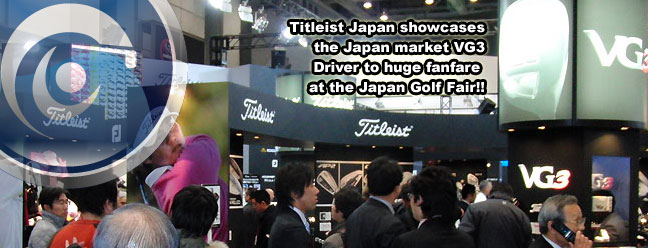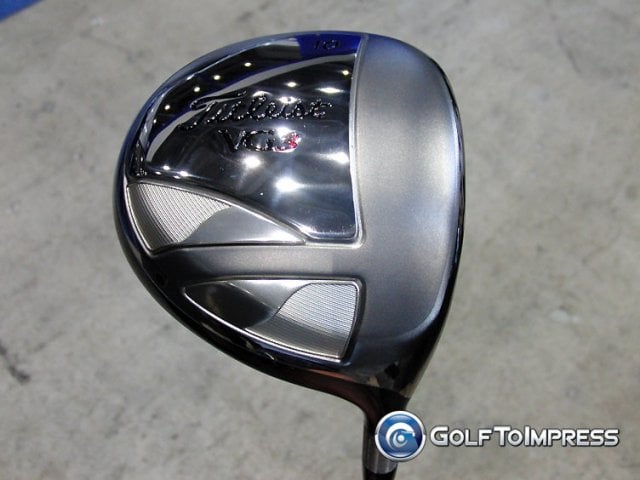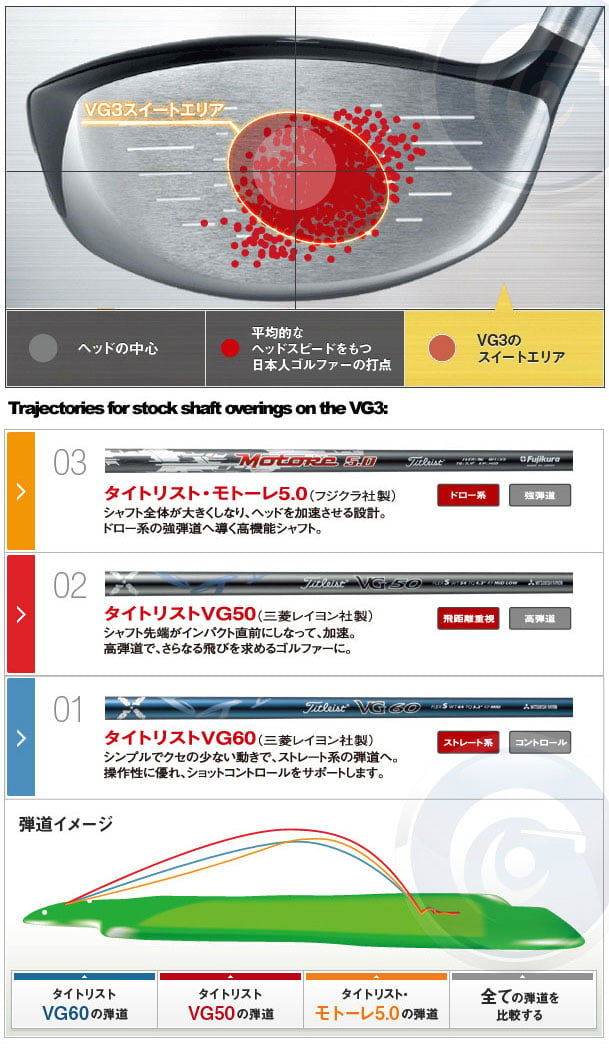 With the official showing to the public of the new Titleist VG3 driver at the Golf Fair this weekend here in Japan, I thought I would go into a bit more detail on what will most likely turn out to be one of the most in demand drivers of 2010.
With the official showing to the public of the new Titleist VG3 driver at the Golf Fair this weekend here in Japan, I thought I would go into a bit more detail on what will most likely turn out to be one of the most in demand drivers of 2010.
 Titleist has long been known as a brand made for the better golfer and professional player. Titleist however wants the golfing world to know that it not only makes the best clubs for the better player but also for any golfer who demands the highest in quality and performance. To help support this point, Titleist Japan and Titleist America joined forces to develop a new concept driver specifically designed with the Japanese market golfer in mind, and the idea of hitting it long and straight.
Titleist has long been known as a brand made for the better golfer and professional player. Titleist however wants the golfing world to know that it not only makes the best clubs for the better player but also for any golfer who demands the highest in quality and performance. To help support this point, Titleist Japan and Titleist America joined forces to develop a new concept driver specifically designed with the Japanese market golfer in mind, and the idea of hitting it long and straight.
For many years, Titleist has been accumulating data about golfers head speed, age, distance etc. They came to the conclusion for this new design that this driver should provide the best performance at an average club head speed (40 – 43 m/s), unlike previous Titleist Drivers which were made for faster swinging and better players. Tileist Japan’s development team with joint cooperation from Titleist America sought to create a high performance Titleist driver with a focus on flying distance.
The VG3 was actually in development for almost a year and, through constant testing, and trial and error, Titleist created a driver with a Variable Gravity and CG position based on loft that would maximize the ability for the driver to grab the ball with clean impact creating maximum distance. The new Variable Gravity 3 or VG3 was born.
Without changing the head shape or size, Titleist alters the center of gravity on each loft (9, 10 and 11*) using two weight plates towards the back heel of the driver. The weight plates on the sole were designed to look like the tips of two Japanese swords pointing at one another. As you can see from the different positioning of the weights, the 9* is towards the heel but more forward creating a smaller gravity angle and a shallower CG point. While heel weight typically promotes a draw in this case it actually aids to battle the left side as the shorter gravity angle does not rotate square as fast as a larger one. The 10* places more weight further back to increase the gravity angle and push CG back but not as far as the 11* which is the high launch max carry model of the 3 with the CG back and big gravity angle that squares the face quickly for those slicers or those looking for a draw ball.
The sweet spot was also designed to match the typical strike pattern of the average Japanese golfer. Using the date Titleist Japan collected over years from hundreds of average golfers, they determined that by widening the sweet spot towards the heel lower, this increased the smash factor of the balls hit off center. The weighting coupled with the sweet spot allow average golfers to maximize distance, in other words, straight with optimal spin and carry.
Titleist did not stop there as they know as well as anyone that a good shaft contributes to a good club so they worked to creat 3 stock shaft offers that will suit players looking for different kinds of trajectories and styles of ball flight. The Yellow line in the chart represents the Motore 5.0 which is made for a draw ball and a distance focus. The red line represents the VG50 shaft made for high launch and max carry for those who have trouble getting the ball in the air or simply want to carry it as far as possible. The blue line is the VG60 which is the heaviest and lowest torque stock shaft and produces a lower more penetrating flight with a focus on control.
A large part of the development of the VG3 was Nobuo Serizawa, a 5 time winner on the Japanese tour and well known contributor to many golf publications when it comes to lessons and swing tips for average golfers. He is the spokesperson for the new VG3 line and took part in all the development and testing as a consultant and tester. Check out the promo video from Titleist for the new VG3 driver which features Serizawa in the US testing the driver and commenting on its performance as well as Dan Stone, VP Club R&D making comments on the driver.
[flv:http://blog.tourspecgolf.com/videos/vg3_promo.flv 640 427]
So how does it feel and perform? We were unable to really test performance as we had to hit indoors at the show in hitting bays so performance tests will come when I get a demo from Titleist in coming weeks. Feel however is superb. This driver is premium forged titanium and a multi piece laser welded head with forged cup face. Just these characteristics alone plus the soft feel make me suspect that this Japanese built driver could be made at Endo especially with a history of Titleist manufacturing at Endo. As with all premium forged drivers in Japan, they come with a price tag that surprise many who don’t know the Japanese market. Titleist has set the MSRP of the VG3 at around 850.00US based on the current Yen and USD exchange rate (we’ve tried to price it lower at 729.00). While this is the average price for a premium driver in Japan, I am sure most Titleist users are not used to this kind of cash for a driver. I guess we have to think of it as a tour quality premium made driver as a lot of people do consider when they purchase Japanese gear.
The pre order is up in the pro shop for the mid to late March shipping date. Initially the VG3 will be only available with the 3 stock shafts I mentioned above. The VG3 will eventually be available direct from Titleist with all the top shafts in Japan.
Here are a few pics we took from the show:
[nggallery id=64]




How do I know the lie angle of the VG3 driver?
61* lie sir
Does this driver conform to USGA rules?
Of course. All drivers from all Japanese mainstream brands conform to USGA rules. Most top Japanese brands stopped making non conforming drivers more than 3 years ago.